category: Limet-Filling pattern
stitches used: Lazy Daisy and Rose stitches
center: intersection of withdrawn thread lines (in other shapes or motifs: longitudinal axis = withdrawn thread line)
The last filling pattern on my blog was number 481.
Since then I published the Star book that contains 58 different star filling patterns.
So the next filling pattern on my blog is number 540.
First, establish a Limet grid by cutting 1, leaving 3, vertically and horizontally.
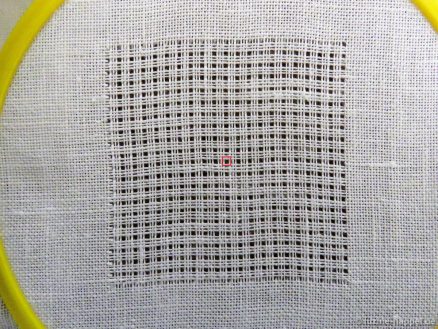
Bring the needle up in the center hole and pull the thread through.
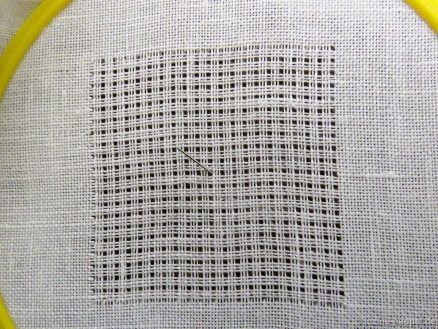
Lay the thread in a loop to the left and down.
Insert the needle again in the center hole and bring it up 1 square diagonally left down (3 threads down and 3 threads to the left).
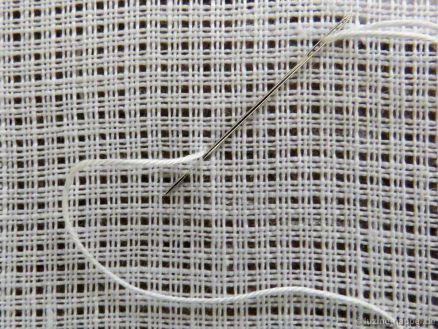
Lay the loop beneath the needle.
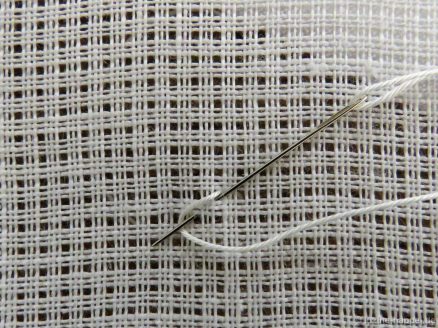
Pull the thread through and tighten it a little bit drawing it in the direction of the loop. Be careful to not tighten too much – the loop should keep its hoof shape.
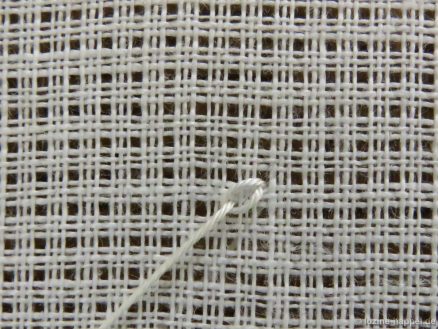
Cross over 1 square diagonally left down, insert the needle and bring it back up through the center hole.
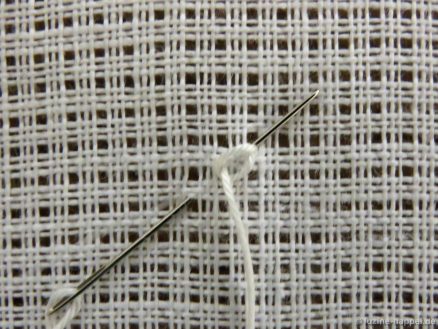
Work 3 more Lazy Daisy stitches counterclockwise
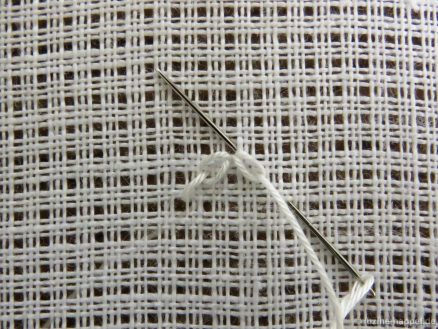
When one round (one element) is complete, continue to work the row of elements by crossing diagonally under 2 squares to bring the needle up in the next center.
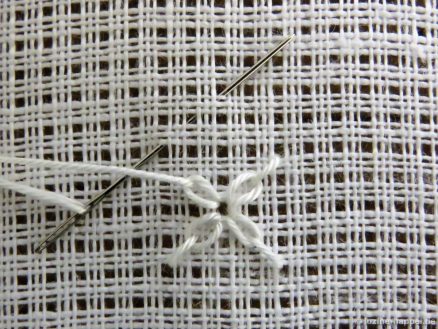
In the established way work rows up
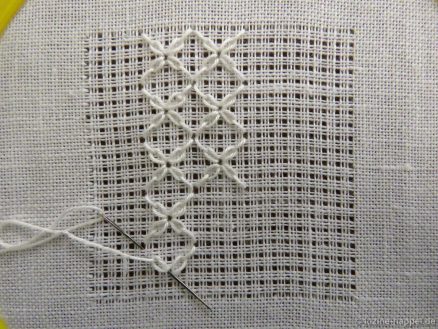
until the entire shape is filled.
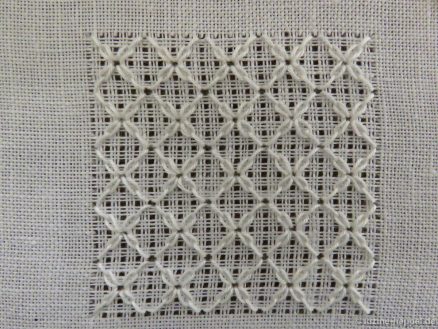
Now start to work Rose stitches in diagonal rows,
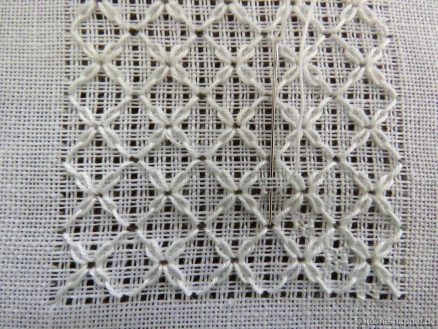
1 in each of the spaces that remain between the Lazy Daisy elements.
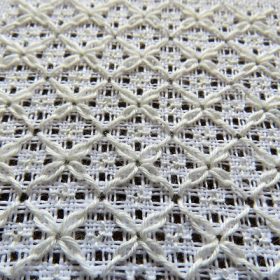
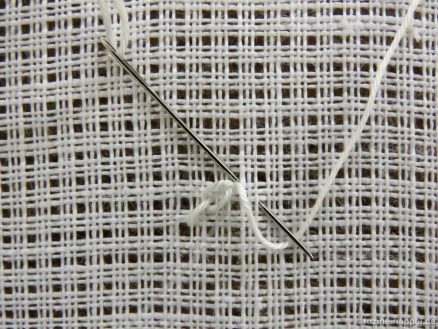
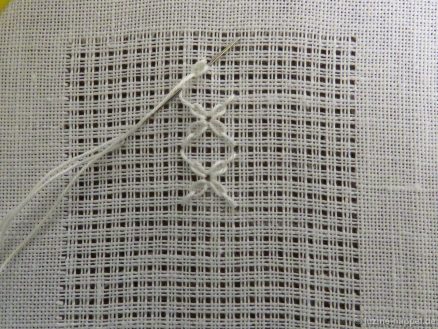
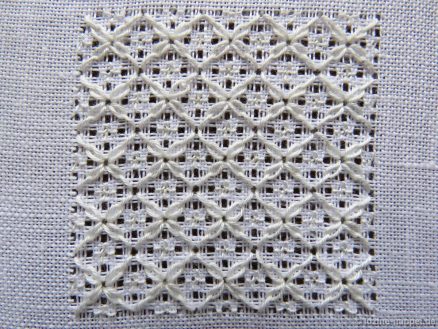
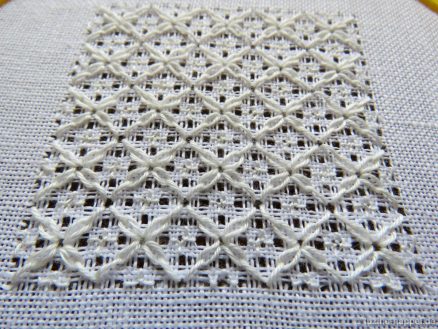


Beautiful stitch!
Is it necessary to secure the edges of the grid with a satin stitch before stitching the filling pattern?
Thanks for sharing, love the stitch.
Yes, it is always necessary to secure the edges while withdrawing threads inner the shape.There are different possibilities, Satin stitch is one option. Making practicing exercises like this pattern here I try to save time by abstaining from securing. It is a practicing piece only and is not used without showing the steps for working the pattern.
Muchas gracias por sus claras explicaciones, es una técnica de calado que se ha perdido en el tiempo y es muy bella. Aqui en Colombia al punto de rosa le llamamos punto Espíritu, porque se forma como unas cruz en el centro.
Gracias por el cumplido y gracias por la explicación. Hay muchos puntos hermosos. Están bordados en muchas partes del mundo.
Que bonito está tu trabajo. Mi abuela sabía hacer todo tipo de bordados y yo fui tan renuente de aprenderlo, que ahorita no sabes cuánto lo lamento. Te felicito por compartir lo que sabes, ahora busco aprenderlo pues tiene un significado especial al verlo. Te mando un abracito!!
Aprender de la abuela hubiera sido más fácil. Pero así es como funciona. Nunca es demasiado tarde para estar interesado en hermosos bordados.